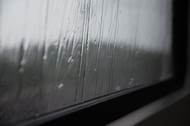What Is Silicone Elastomer and How Does It Work?
Nov 27th 2023
When it comes to creating a weather-resistant seal, silicone offers several benefits. For one, silicone sealants offer a high degree of temperature tolerance and can resist high temperatures as well as low temperatures. Another benefit is the elasticity of silicone sealant.
RTV, or Room-Temperature-Vulcanizing, silicone sealant is an elastomer. This has to do with its chemical structure; chainlike polymers give it the strength to withstand pulling and flexing, while the shape of these chemical chains enables it to be flexible and stretchy. This results in a highly heat-resistant, strong material that can be used for applications including effectively sealing homes.
Room temperature vulcanization allows RTV silicone sealant to complete the cure process without the application of additional heat or radiation, making this a particularly effective solution in both long-term commercial and residential applications.
However — weatherproofing a client’s home requires more than just a working understanding of RTV silicone elastomers and their mechanical properties. How does one create an effective seal with it?
Considerations When Using Silicone
When using silicone sealants, especially to seal a home, there’s a lot to consider. Here are some of the most important things you should keep in mind.
Curing Time
Silicone sealant must be allowed time to cure. This is not just the time it takes a bead of silicone to become dry to the touch but the time it takes to gain its full strength. Typically, silicone sealant will require around 24 hours to cure. Consult the manufacturer's recommendations for any sealant you use to ensure you provide adequate curing time without disturbing it.
Moisture Mitigation
While silicone sealant is a great way to mitigate future moisture, it must be applied to clean and dry surfaces. This includes both water and oil; in applying silicone, take great care to completely dry any surfaces to which you hope for your silicone to adhere.
Fumes and Ventilation
Another vital consideration is that silicone sealants, especially acetoxy silicone sealants, can give off harmful fumes as they cure. Acetoxy silicone sealant off-gasses, releasing acetic acid, which can be harmful to the eyes, to the skin, and when inhaled.
Applying Silicone Effectively
When applying silicone, there are some additional factors to consider.
Surface Preparation
We’ve already discussed how moisture and oil can prevent silicone from adhering properly to your sealing surface. While moisture mitigation is a primary consideration, surface preparation can also involve removing any dirt or debris from the area and stripping it of any oils. Additionally, if there is existing sealant, whether silicone or traditional caulk, be sure to remove all of it if possible, and if not, as much as you can.
Application Technique
Whether you’re applying liquid silicone rubber with a two-part system or using a caulk gun with a tube of RTV silicone, it’s important to consider your beading technique. As silicone can begin to harden relatively quickly, it’s important to remain mindful of how wide you cut the applicator nozzle and keep consistent pressure and speed as you apply beads. You may not be able to smooth over beads once they start to cure, and attempting to do so can result in minor tearing along the bead’s surface.
Corners can be tricky; as you approach a corner, be sure to ease off the trigger of the gun as you get close to it. This will allow the pressure in the tube to finish releasing as you approach the end, mitigating the risk of excess material spilling out. Next, begin by creating a small overlap in the corner and drawing out into your next bead. Quickly use a wet finger or rag to smooth over the corner to ensure finish quality. Some contractors leave corners as the last task, giving themselves an environment where they can more easily control the bead quality.
Curing
Finally, the curing process is critical in RTV silicone sealants. Elastomers like RTV silicone sealant require certain conditions in their curing environment — chiefly a low amount of contact with water. Water — or oil — can interrupt the process of adhesion to the sealing surface. While RTV silicon sealant relies on moisture in the air to properly cure, direct contact with liquid water can undermine its application. Additionally, ensure that once the surface of the silicone sealant has begun to harden, you don’t attempt to tool it or smooth it, as this can undermine its appearance and potentially risk damaging the adhesion.
The Bottom Line
While RTV silicone is a great way to seal homes, there are some vital considerations to remain cognizant of. Silicone elastomers offer a wide range of potential benefits; they can weather years of moisture and create effective seals, they’re elastic and can be applied to a wide range of surfaces, and they create a tough barrier that’s difficult to damage long-term.
Still, there are several considerations to take into account. It’s important to understand the curing process, prepare your surfaces for application, and even take precautions such as ventilation in your work site.
Silicone Depot has a wide range of silicone sealants and guns to suit your needs and the needs of your customers. Whether you’re looking for caulking guns, sealant nozzles, or the latest in elastomer silicone sealants, we have a wide selection of sealants and caulking accessories to meet your needs. Be sure to check out our selection today.

